Automation of trade: a brief example of implementation
Any self-respecting enterprise sees growth in its prospects. At a certain stage of development, there may be an acute issue of informatization, and sometimes automation of operations. The workflow increases and it becomes not so easy to cope with the paper file, especially if the volumes of the processed information are very large.
Today I will tell a little story about how we managed to automate trade operations and document management in one small enterprise on our own. I will try to cover a maximum of questions and ways to solve them.
Although, you know, to cover the entire volume of the work being done is simply impossible in a small publication.
')
The company carries out retail trade with a range of over 9,000 trade names. Initially, the company had old EKKA Mini 600 devices.
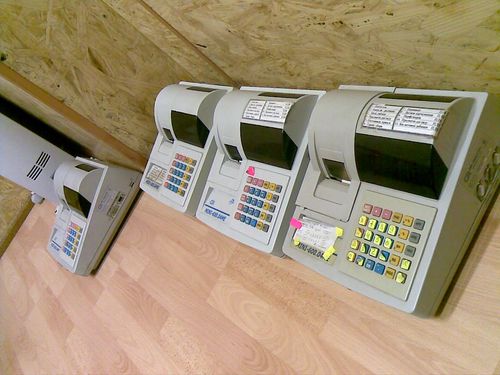
You understand that there can be no talk of marketing analysis, logistics, operational statistics or the use of such simple devices in parallel with the presence of such a wide range.
Also, a lot of precious time is spent on paperwork processing, the efficiency of making management decisions falls.
Initially, the office had a couple of workstations - mainly for accessing the Internet, working with electronic documents and accounting.
The first stage of informatization provided for informatization only in the main room (which was divided into 3 parts). To replace the EKKA mini 600 (which we have had for a long time), we chose the DATECS FP3141T, because the local tax "worked" only with Datex - whether they have an unwritten contract, or something else - we will not philosophize.
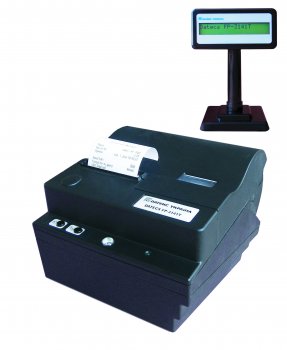
As it turned out, Datecs FP3141T is a complete slag, otherwise it will not be called. First, the devices have the property "slow down" if you add a logo print to the check. Secondly, the mechanics are too simple, a lot of plastic elements, the cutting knife sometimes wedges, and the tape has the ability to chew. Refilling cash tape is extremely inconvenient. The tape control sensor is absent, or rather, it works only when it has already ended - at the same time, the device does not close the check and falls into a stupor if a check is printed.
As the basis for the network, it was decided to use Wi-Fi - a minimum of wires, a maximum of freedom - we thought then, not knowing what awaits us ahead.
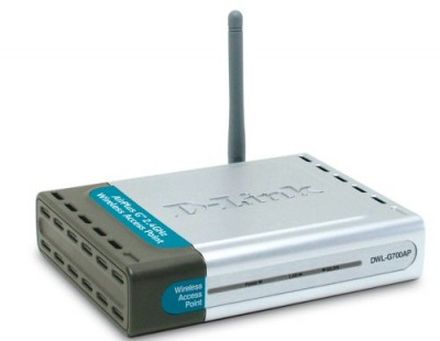
And, as always, savings ... the simplest DWL-G700AP was bought, the DWL-G510 Airplus G cards were purchased to it, its performance seemed to be small, and later we changed the old Wi-Fi point to two DWL-3200AP points, dividing the office network and the network of the trading floor.
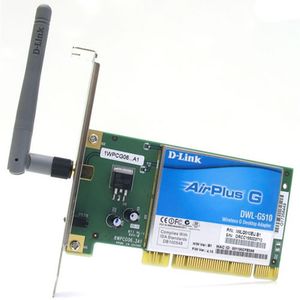
As we understood later, Wi-Fi is a problem of stability and security. As a result, after six months of shamanism with a tambourine, firewood and the purchase of antennas, we still returned to the twisted pair, which works without failures, to this day.
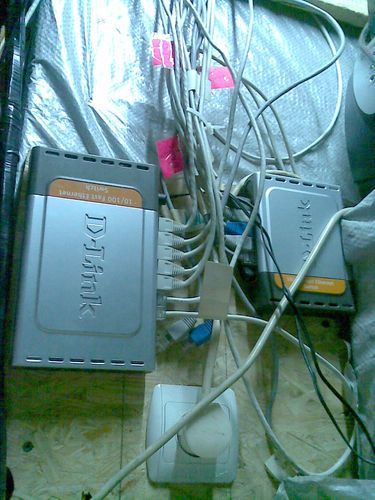
Although the DWL-3200AP remained and were transferred to the DWL + AP mode, they were used for secondary tasks. By the way, for DWL + AP it is recommended to use the latest firmware 2.55 (http://ftp.dlink.ru/pub/Wireless/DWL-3200AP/Firmware/), since There are many fixes in it for this mode.
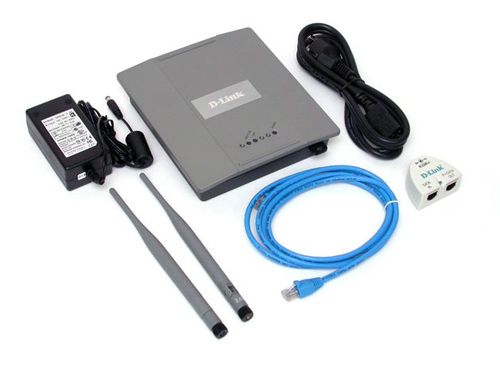
Please note, the DWL-3200AP works simultaneously with only one antenna, therefore, the benefits of replacing stationary antennas with more powerful ones are not so much, just changing one. The point uses the antenna that provides a higher signal level, although manual mode is also possible in the settings.
Time passed, the pace grew. The enterprise expanded. The question arose of the computerization of all branches and their integration into a single information network.
As mentioned earlier, initially informatization was carried out within the same room - there were no difficulties with distributing the local network, but as soon as the branches appeared, the question arose - how to connect several branches?
The Internet disappears - it is slow and not so secure and ... expensive.
In our case, there was a provider in the city, providing Internet access via fiber optic link and twisted pair, and we connected to it.
Then the question arose how to combine all this together.
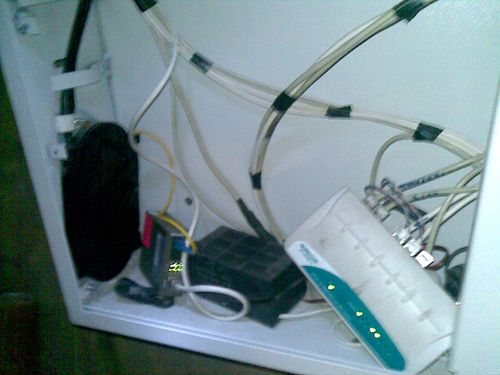
The provider we propose to create a closed internal network between the branches, but the price they requested exceeded the cost of the ZyXel gateway, which could be purchased for such purposes for ~ $ 600.
And even the best solution was to raise the server on a free OS.
So decided. They took the most common PC at that time, based on the Athlon 1.7Ghz / 1 Gb RAM / 320 Gb HDD, added 2 network cards to it and installed FreeBSD on this hardware.
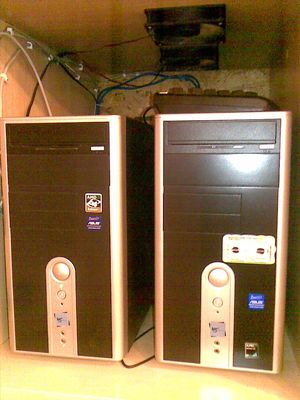
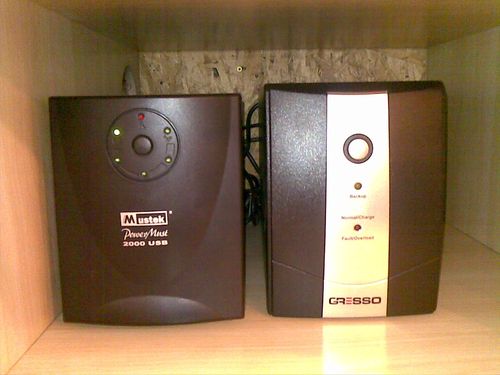
The first network was connected to a switch on the internal network, the second to a fiber-converter with fiber optic from a city provider.
The VPN server with MPPE128 + IP binding + provider’s subnet filtering was raised on the same server.
FreeBSD instead of a router is a cheaper and more flexible solution. Although of the downsides - we don’t understand anyone in FreeBSD, so if anything happens, you need to call a person, pay money.
The second server, trading, collected on the Athlon X2 6000+, 4 GB of RAM, 2 server (24/7/365) Seagate hard drives of 320 GB in the array.
There already had to fork out for purchases ... server windows + 2x5 CAL.
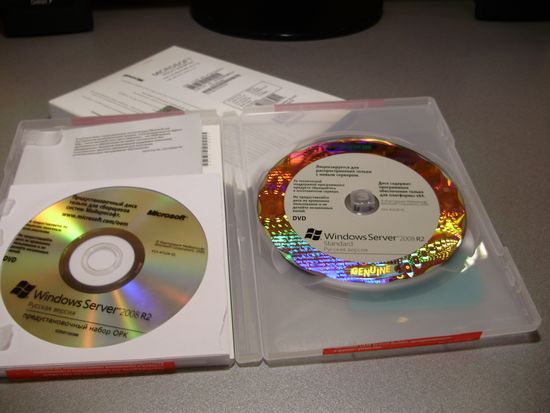
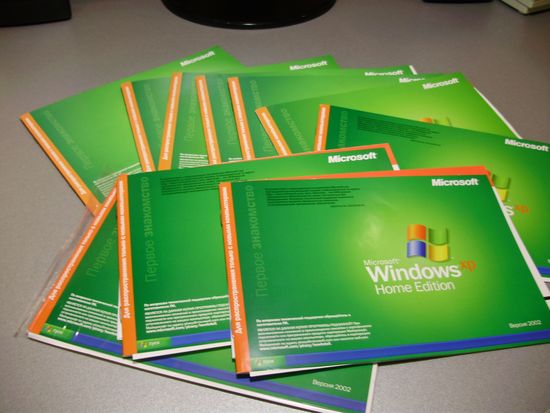
As a result, however, at least 5 more licenses were purchased.

Branches connected to the same provider in the local network via fiber. At the very branches, fiber-conv was installed on a twisted pair.

Schematically, the structure has become something like
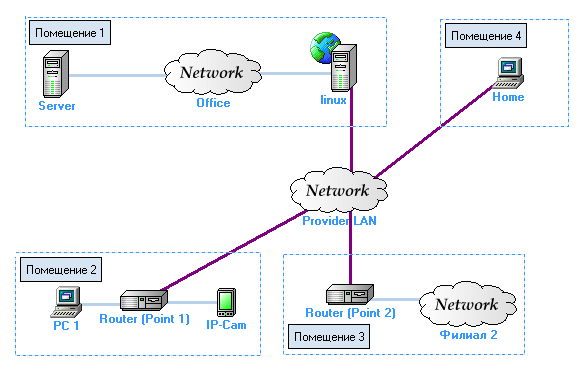
Since branches have more than one device with a network address, you cannot do without a router.
The choice fell cheap D-Link DIR-300 rev.2 - the option is not the best - yes, but it copes.

When choosing a router, the price was important for us, as well as the presence of dual-access and MPPE.
One of the routers had the property to hang when the connection with the server was broken. The problem was solved firmware 2.05beta for NRU / rev.2
On the newest branch (which opened about a month ago) we put other recorders - Datecs FP T-260.
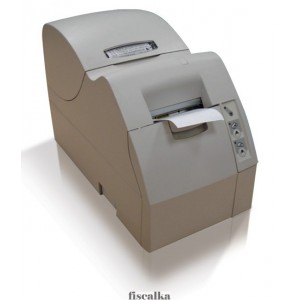
The price they have of course higher, and twice - but it is fully justified. Although the T-260 is cumbersome, in terms of quality and performance, it leaves no chance for newer models - the FP3141T. The device is much more friendly, comfortable and more "smart".
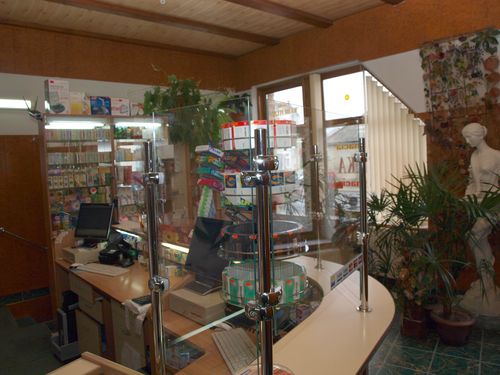
Printers are real workhorses of a modern office, because it is they who retain backward compatibility with paper workflow. It was decided to use 2 printers - the first Canon MF4100 MFP, the second - the Canon i-Sensys LBP3460 network print server - a high-performance, but expensive copy.
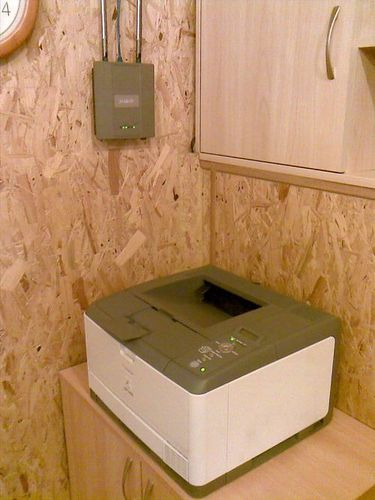

PSC QuickScan 6xxx scanners are best used if different types of codes are used, though they are a bit slow. Datalogic Geron D310 - works much faster, however, there may be problems with codes other than EAN-8/13, this model also works very well with badly readable codes - red and green, as well as damaged ones.
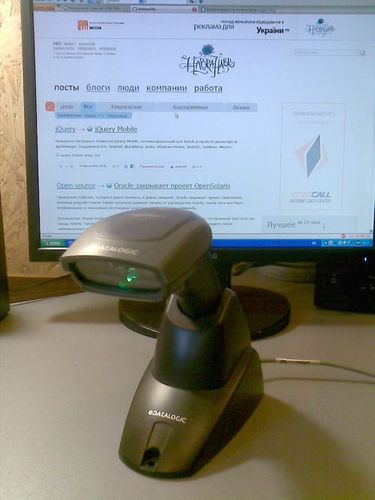
You should also take into account modern realities - there are often cases when manufacturers do not apply barcodes. Therefore, it is also necessary to get a label printer. For these purposes, had to purchase Datecs LP-50.
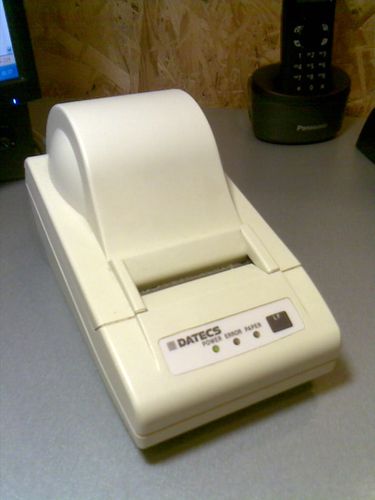
The printer is designed for very small print volumes, so if you need to print a lot, this is not your choice. Over time, the technical and operational characteristics of devices from Datecs tend to change for the worse, and this printer is also no exception.

As for the connection interfaces - COM or USB, it should be noted that most of the software works with COM, only in new PCs it is found less and less. In extreme cases, COM-USB adapters are sold.
Partial total cost - what was remembered
- tariff plan 20Mbps world + 100 Mbit / s UA-IX + local network + real IP ~ $ 40
- 2 additional connections to the provider's local network over fiber ~ $ 18
The total electricity consumption per month in the summer, when there are several air conditioners, exceeds 4,000 kW.
Total: yes, no one really will say how much it all cost.
Of course, in the framework of this publication, a lot has been missed, not much has been said, it is all individually and is learned in the process of work, by trial and error. I would like to draw attention to the following:
- do not save on key nodes - in order not to have to pay twice;
- be prepared for headaches during the first weeks of commissioning;
- use testers when laying utp;
- think about the backup power supply not only for workstations, but also for all equipment, including network - the network will drop - there will be little confusion from workstations;
- use licensed software, at least for the sake of an inner sense of calm;
- duplicate access to the Internet, if some of the documents come by e-mail (we duplicate it via ADSL);
- if something works fine - do not touch it;
- duplicate data, make backups, and duplicate to such an extent so that, if iron fails, you can lift everything from scratch in a couple of hours;
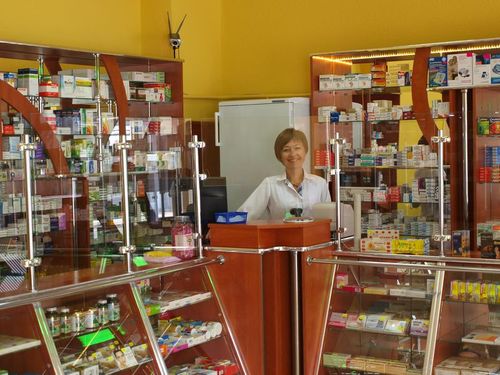
In the photo is the employee of the pharmacy in which the automation was made.
ps do not take this implementation too seriously, it is not a Data Center that you can find fault with ...)
Today I will tell a little story about how we managed to automate trade operations and document management in one small enterprise on our own. I will try to cover a maximum of questions and ways to solve them.
Although, you know, to cover the entire volume of the work being done is simply impossible in a small publication.
')
The company carries out retail trade with a range of over 9,000 trade names. Initially, the company had old EKKA Mini 600 devices.

retired mini 600
You understand that there can be no talk of marketing analysis, logistics, operational statistics or the use of such simple devices in parallel with the presence of such a wide range.
Also, a lot of precious time is spent on paperwork processing, the efficiency of making management decisions falls.
Initially, the office had a couple of workstations - mainly for accessing the Internet, working with electronic documents and accounting.
The first stage of informatization provided for informatization only in the main room (which was divided into 3 parts). To replace the EKKA mini 600 (which we have had for a long time), we chose the DATECS FP3141T, because the local tax "worked" only with Datex - whether they have an unwritten contract, or something else - we will not philosophize.

FP3141T - Discreet apparatus, distinguished by the price ...
As it turned out, Datecs FP3141T is a complete slag, otherwise it will not be called. First, the devices have the property "slow down" if you add a logo print to the check. Secondly, the mechanics are too simple, a lot of plastic elements, the cutting knife sometimes wedges, and the tape has the ability to chew. Refilling cash tape is extremely inconvenient. The tape control sensor is absent, or rather, it works only when it has already ended - at the same time, the device does not close the check and falls into a stupor if a check is printed.
Information network
As the basis for the network, it was decided to use Wi-Fi - a minimum of wires, a maximum of freedom - we thought then, not knowing what awaits us ahead.

DWL-G700AP - miser pays twice
And, as always, savings ... the simplest DWL-G700AP was bought, the DWL-G510 Airplus G cards were purchased to it, its performance seemed to be small, and later we changed the old Wi-Fi point to two DWL-3200AP points, dividing the office network and the network of the trading floor.

As we understood later, Wi-Fi is a problem of stability and security. As a result, after six months of shamanism with a tambourine, firewood and the purchase of antennas, we still returned to the twisted pair, which works without failures, to this day.

Switching center "quick hand" ... plans to put a server cabinet
Although the DWL-3200AP remained and were transferred to the DWL + AP mode, they were used for secondary tasks. By the way, for DWL + AP it is recommended to use the latest firmware 2.55 (http://ftp.dlink.ru/pub/Wireless/DWL-3200AP/Firmware/), since There are many fixes in it for this mode.

DWL-3200AP - a good point with PoE support
Please note, the DWL-3200AP works simultaneously with only one antenna, therefore, the benefits of replacing stationary antennas with more powerful ones are not so much, just changing one. The point uses the antenna that provides a higher signal level, although manual mode is also possible in the settings.
Time passed, the pace grew. The enterprise expanded. The question arose of the computerization of all branches and their integration into a single information network.
Branch connection
As mentioned earlier, initially informatization was carried out within the same room - there were no difficulties with distributing the local network, but as soon as the branches appeared, the question arose - how to connect several branches?
The Internet disappears - it is slow and not so secure and ... expensive.
In our case, there was a provider in the city, providing Internet access via fiber optic link and twisted pair, and we connected to it.
Then the question arose how to combine all this together.

Provider locker
The provider we propose to create a closed internal network between the branches, but the price they requested exceeded the cost of the ZyXel gateway, which could be purchased for such purposes for ~ $ 600.
And even the best solution was to raise the server on a free OS.
So decided. They took the most common PC at that time, based on the Athlon 1.7Ghz / 1 Gb RAM / 320 Gb HDD, added 2 network cards to it and installed FreeBSD on this hardware.

Server cabinet, in the truest sense of the word ...

Backup power servers
The first network was connected to a switch on the internal network, the second to a fiber-converter with fiber optic from a city provider.
The VPN server with MPPE128 + IP binding + provider’s subnet filtering was raised on the same server.
FreeBSD instead of a router is a cheaper and more flexible solution. Although of the downsides - we don’t understand anyone in FreeBSD, so if anything happens, you need to call a person, pay money.
The second server, trading, collected on the Athlon X2 6000+, 4 GB of RAM, 2 server (24/7/365) Seagate hard drives of 320 GB in the array.
There already had to fork out for purchases ... server windows + 2x5 CAL.

Small windows server

+ a dozen licenses for client machines ...
As a result, however, at least 5 more licenses were purchased.
Branches

Guard on one of the branches
Branches connected to the same provider in the local network via fiber. At the very branches, fiber-conv was installed on a twisted pair.

Fiber-conv
Schematically, the structure has become something like

Since branches have more than one device with a network address, you cannot do without a router.
The choice fell cheap D-Link DIR-300 rev.2 - the option is not the best - yes, but it copes.

recognizable D-Link DIR-300
When choosing a router, the price was important for us, as well as the presence of dual-access and MPPE.
One of the routers had the property to hang when the connection with the server was broken. The problem was solved firmware 2.05beta for NRU / rev.2
On the newest branch (which opened about a month ago) we put other recorders - Datecs FP T-260.

Massive T-260
The price they have of course higher, and twice - but it is fully justified. Although the T-260 is cumbersome, in terms of quality and performance, it leaves no chance for newer models - the FP3141T. The device is much more friendly, comfortable and more "smart".

First trading floor with P3141T
Workhorses
Printers are real workhorses of a modern office, because it is they who retain backward compatibility with paper workflow. It was decided to use 2 printers - the first Canon MF4100 MFP, the second - the Canon i-Sensys LBP3460 network print server - a high-performance, but expensive copy.

Favorite - iSensys

old man mf4100
Work with barcodes
PSC QuickScan 6xxx scanners are best used if different types of codes are used, though they are a bit slow. Datalogic Geron D310 - works much faster, however, there may be problems with codes other than EAN-8/13, this model also works very well with badly readable codes - red and green, as well as damaged ones.

Geron D130
You should also take into account modern realities - there are often cases when manufacturers do not apply barcodes. Therefore, it is also necessary to get a label printer. For these purposes, had to purchase Datecs LP-50.

The printer is designed for very small print volumes, so if you need to print a lot, this is not your choice. Over time, the technical and operational characteristics of devices from Datecs tend to change for the worse, and this printer is also no exception.

As for the connection interfaces - COM or USB, it should be noted that most of the software works with COM, only in new PCs it is found less and less. In extreme cases, COM-USB adapters are sold.
Partial total cost - what was remembered
- server on FreeBSD ~ $ 300
- connection of the server to the local network of the provider with optical fiber ~ $ 500
- connection of two points by fiber to the provider ~ $ 625
- trading server ~ $ 600
- two routers D-Link DIR-300 ~ $ 90
- two D-Link DWL 3200AP ~ $ 600 access points
- 4 switches D-Link 2x5-pot / 2x8-port ~ $ 60
- bay UTP5e 305m ~ $
- tool - was available
- 2 UPS at 2000VA for servers ~ $ 375
- 1 UPS 2000VA for printer ~ $ 188
- Windows Server ~ $ 800
- 2 CAL5 ~ $ 350
- 15 OEM licenses of Windows Home [shipped with assembled PCs] ~ $ 2,600
- 15 workstations / iron ~ $ 6000
- 15 Mustek 800 UPS UPS ~ $ 1125
- Canon MF4100 ~ $ 400 MFP
- workhorse Canon i-Sensys LBP3460 ~ $ 900 + ~ $ 200 X-cartridge from HP
- 7 Datecs 3141T ~ $ 3150 fiscal recorders
- 2 Datecs FP T-260 ~ $ 2230 fiscal registrars
- 7 PSC QuickScan scanners ~ $ 875
- 4 scanners Datalogic Geron D310 ~ $ 850
- Mobile nettop Point of View Mobii ~ $ 300
Monthly
- tariff plan 20Mbps world + 100 Mbit / s UA-IX + local network + real IP ~ $ 40
- 2 additional connections to the provider's local network over fiber ~ $ 18
The total electricity consumption per month in the summer, when there are several air conditioners, exceeds 4,000 kW.
Total: yes, no one really will say how much it all cost.
Instead of conclusion
Of course, in the framework of this publication, a lot has been missed, not much has been said, it is all individually and is learned in the process of work, by trial and error. I would like to draw attention to the following:
- do not save on key nodes - in order not to have to pay twice;
- be prepared for headaches during the first weeks of commissioning;
- use testers when laying utp;
- think about the backup power supply not only for workstations, but also for all equipment, including network - the network will drop - there will be little confusion from workstations;
- use licensed software, at least for the sake of an inner sense of calm;
- duplicate access to the Internet, if some of the documents come by e-mail (we duplicate it via ADSL);
- if something works fine - do not touch it;
- duplicate data, make backups, and duplicate to such an extent so that, if iron fails, you can lift everything from scratch in a couple of hours;

In the photo is the employee of the pharmacy in which the automation was made.
ps do not take this implementation too seriously, it is not a Data Center that you can find fault with ...)
Good luck!
Source: https://habr.com/ru/post/101786/
All Articles